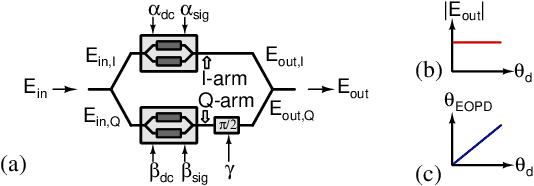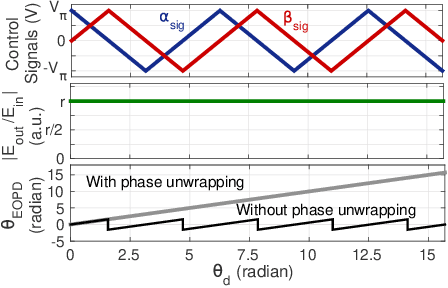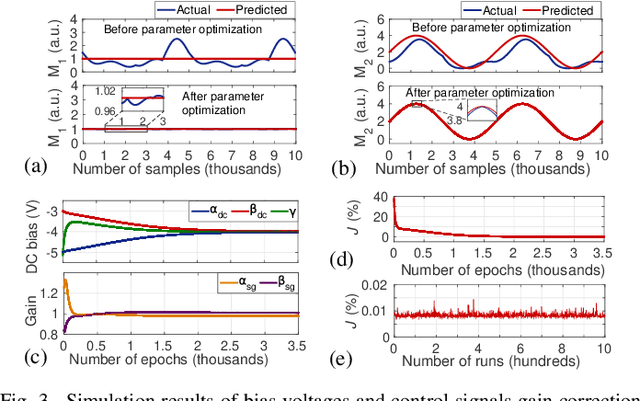Sana Naaz
An Analog Signal Processing EIC-PIC Solution for Coherent Data Center Interconnects
Feb 18, 2022Abstract:Data center interconnects (DCIs) will have to support throughputs of 400 Gbps or more per wavelength in the near future. To achieve such high data rates, coherent modulation and detection is used, which conventionally requires high-speed data conversion and signal processing in the digital domain. Alternatively, high-speed signal conditioning and processing could be carried out in co-designed photonic and electronic integrated circuits, in the optical and electrical analog domains, respectively, to achieve reduced power consumption, latency, form factor, and cost. A few demonstrations of analog domain processing electronic integrated circuits (EICs), including those of equalizer and carrier phase recovery (CPR) modules showcase progress in this direction in the literature. In this brief, for the first time, we present integration of a silicon photonic integrated coherent receiver (ICR) module with a CPR module, as a part of a complete coherent receiver solution. A phase shifter in the ICR (fabricated in a 220 nm silicon-on-insulator technology) receives feedback from a CPR EIC, and the combination compensates for the time varying phase offset between the modulated signal and the unmodulated carrier in the closed loop configuration. In this proof-of-concept demonstration, we present experimental results obtained from the stand-alone silicon photonic ICR along with its system level integration with CPR chip, for QPSK signals. The technique can be extended to a higher-order modulation format, such as 16-QAM, for data rate scaling. The proposed scheme is suitable for homodyne systems, such as polarization multiplexed carrier based self-homodyne links.
An Endless Optical Phase Delay for Phase Synchronization in High-Capacity DCIs
Jun 17, 2021



Abstract:In this work, we propose and demonstrate a module to linearly add an arbitrary amount of continuous (reset-free) phase delay to an optical signal. The proposed endless optical phase delay (EOPD) uses an optical IQ modulator and control electronics (CE) to add the desired amount of phase delay that can continuously increase with time. In order to adjust for the bias voltages and control voltage amplitudes in the EOPD, some of which may be time varying, a multivariate gradient descent algorithm is used. The EOPD has been demonstrated experimentally, and its use in a high-capacity data center interconnect (DCI) application has been outlined in this letter. The EOPD may find its use in many other applications that require precise phase/frequency adjustments in real-time.
 Add to Chrome
Add to Chrome Add to Firefox
Add to Firefox Add to Edge
Add to Edge